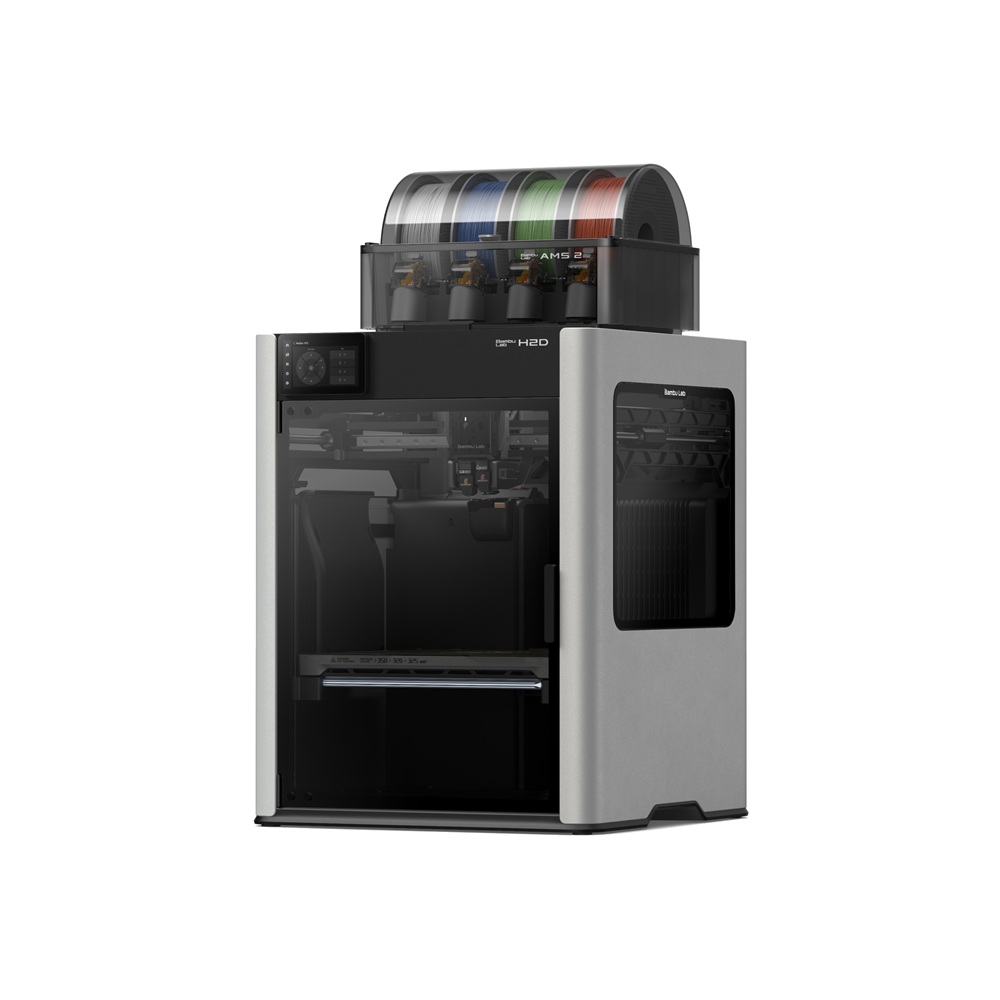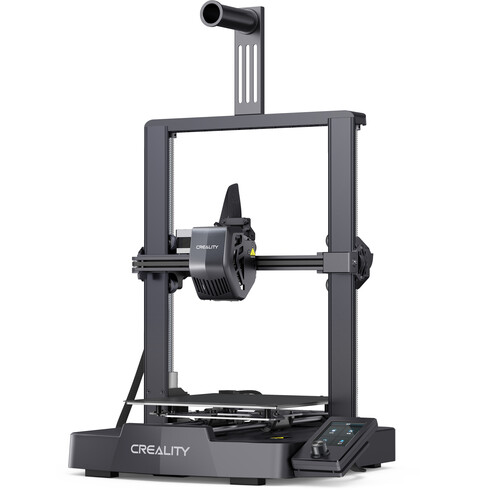Compare H2D vs Ender 3 V3 SE
Comparison between the best 3D printers
Choose the best 3D printer at the best price. The cheapest 3D printers are here.
Buy a 3D printer here with 3D Fila.
 |
 |
|
| Model | H2D |
Ender 3 V3 SE[BUY Ender 3 V3 SE] |
| Printing Material | Filament | Filament |
| Buy Filament for Bambu Lab H2D | Buy Filament forCreality Ender 3 V3 SE | |
| Estimated price | $1899,00 | $199,00 |
| Manufacturer | Bambu Lab | Creality |
| Release Year | 2025 | 2023 |
| Print Volume [mm] | 350x320x325 | 220x220x250 |
| Printer Size [mm] | 492x514x626 | 420x366x490 |
| Weight [kg] | 42,3 | 7,34 |
| Power Loss Recovery | YES | NO |
| Enclosed printer | YES | NO |
| Bed Leveling | Automatic | Automatic |
| Filament End Sensor | YES | NO |
| Bed type | Heated | Heated |
| Power supply system | Direct Drive | Direct Drive |
| Standard nozzle | 0,4 | 0,4 |
| Maximum Nozzle Temperature [°C] | 350 | 260 |
| Maximum Bed Temperature [°C] | 120 | 100 |
| Maximum printing speed [mm/s] | 600 | 250 |
| Filament holder | YES | YES |
| Camera for supervision | YES | YES |
| Recommended filaments | PLA, PETG, ABS, ASA, TPU, PVA, Nylon (PA) | PLA, PETG e TPU (95A+) |
| Recommended slicers | Bambu Studio | Creality Print, Cura 5.0 ou superior, Prusa Slicer, Orca |
| Maximum Resolution [mm] | 0,01 | 0,1 |
| Processor | 32-bit Silenciosa | |
| Display | Touchscreen 5'' | 3,2'' + Knob |
| Power Supply | 350 W | |
| Connectivity | Wifi, Bambu bus, Cartão SD | SD |
| Operating systems | Windows, Mac, Linux | Windows, Linux, Macbook |
| Date of registration in the system | 2025-03-31 | 2024-03-06 |
| Release date | 2025 | 2023 |
| Extra features | Bambu Labs H2D combines high-speed 3D printing with a chamber heated up to 65 °C, dual extrusion with automatic nozzle switching, an AMS for filament drying and exchange, and AI sensors that detect failures. It offers optional laser and digital cutting capabilities, features intelligent calibration through computer vision, vibration control, enhanced fire safety, and real-time camera monitoring. | The Ender 3 V3 SE stands out for its easy assembly, excellent automatic bed leveling, direct extrusion and easy interface, ideal for beginners. Although it uses a coated PC board, it offers robust performance, with print speeds of up to 250mm/s, thanks to a solid construction and linear rods on the Y axis. It lacks Wi-Fi, preferring file transfer via SD card. |
| Support for multiple colors and materials (AMS and CFS) | YES | NO |
Notes * |
||
| Cost-benefit | 7 / 10 | 7 / 10 |
| Hardware | 8 / 10 | 0.8 / 10 |
| Tela | . | . |
| Print volume | 4 / 10 | 3 / 10 |
| Performance | 5 / 10 | 2 / 10 |
| [BUY Ender 3 V3 SE] |
Conclusion |
| In conclusion, the Bambu Lab H2D and the Creality Ender 3 V3 SE represent two distinct segments of the 3D printer market, catering to different user needs and budgets. The H2D, positioned as a premium offering with advanced features such as high-speed printing, automatic failure detection, and enhanced material compatibility, is designed for professional users who prioritize performance and the ability to handle complex tasks. With a larger print volume, higher maximum temperatures, and a wealth of additional capabilities, it justifies its higher price point through its robust feature set and potential for technical precision in diverse applications. Conversely, the Ender 3 V3 SE stands out as an excellent entry-level printer, well-suited for beginners or hobbyists. Its affordability, combined with user-friendly features like automatic bed leveling and a straightforward assembly process, makes it accessible for those new to 3D printing. While it lacks the advanced capabilities of the H2D, it still delivers solid performance for basic projects and is compatible with popular slicers. Ultimately, the choice between the two depends on the user's specific requirements. Those seeking advanced features and higher performance will find value in the H2D, while those looking for budget-friendly and easy-to-use options will be satisfied with the Ender 3 V3 SE. Each model scores similarly on cost-benefit, indicating that both represent good value in their respective categories, making the final decision one of intended use rather than a straightforward comparison of quality and capabilities. |

